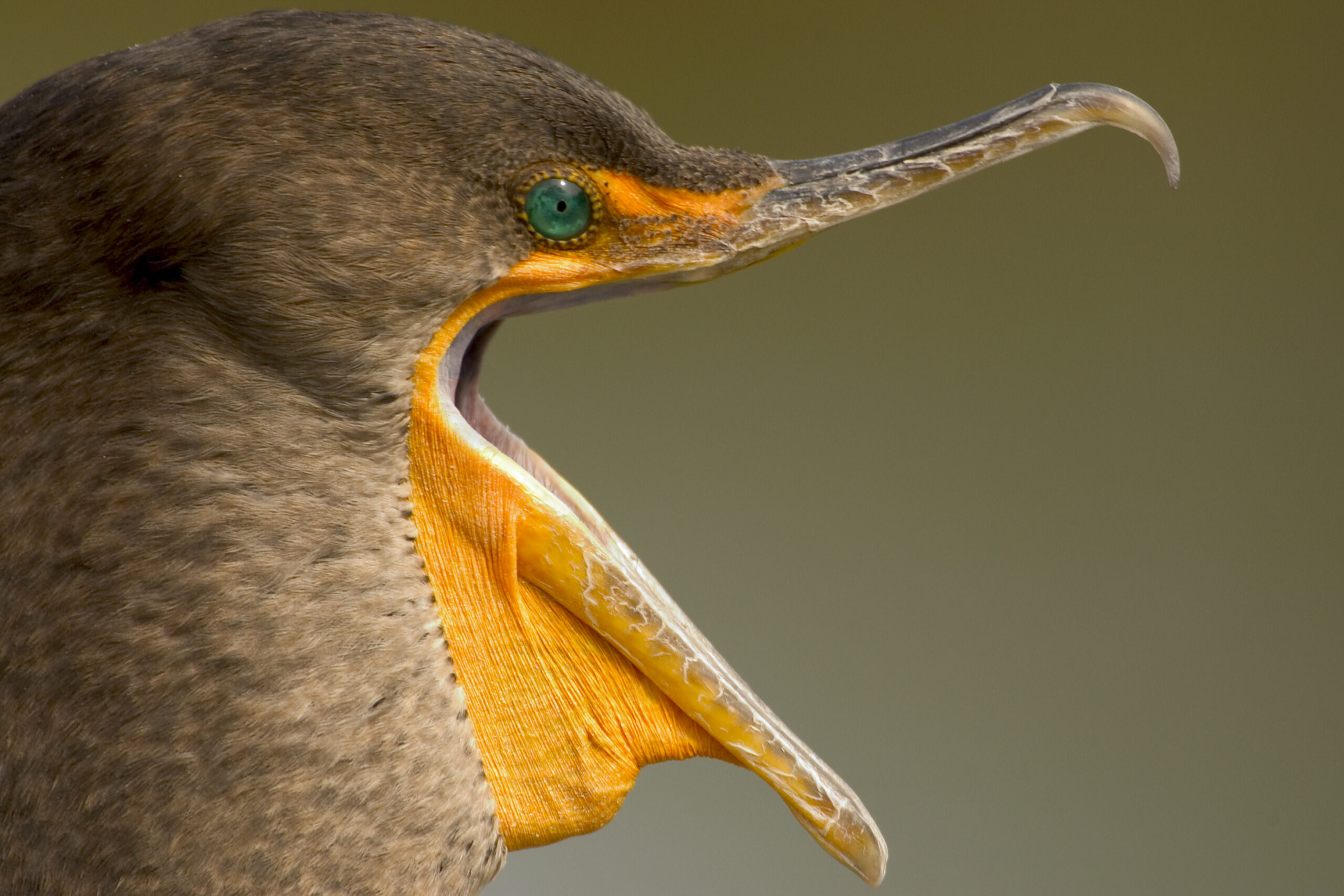
As a proud member of BirdNote’s board of directors, I wanted to share these amazing stories from BirdNote’s collection of essays called, “BirdNote: Chirps, Quirks, and Stories of 100 Birds from the Popular Public Radio Show”. This story, by Frances Wood, focuses on bird sounds and how they are created in certain species of birds.
Deep, guttural bird sounds are coming from a nesting colony of Double-crested Cormorants — large black waterbirds with short legs and long necks. If you look closely, you can see the bird’s double crest– its two long, gloriously feathered eyebrows. When not nesting, Double-crested Cormorants are a common sight near fresh and saltwater. They often sit upright on a rock or piling, holding their wings out to the sides, resembling a black Celtic cross. During courtship, they may wave their outstretched wings.
Why do they have such a limited and guttural vocal range when many birds create glorious songs? It has to do with the number of muscles a bird can use to govern its vocal organ, the syrinx. The more muscles they have, the more elaborate the sound. Many songbirds have five to seven sets of these muscles. The cormorant has only one.
As a bird photographer, I have been fortunate to travel all around the world to many birding sites and lodges. This collection of Double-crested Cormorants was taken at Wakodahatchee Wetlands in Florida. Enjoy more BirdNote stories in a beautiful book with full-color illustrations. Chirps, Quirks, and Stories of 100 Birds make a wonderful gift. The book is available from BirdNote’s retail partner, Seattle Audubon. Your purchase will support BirdNote’s mission to expand the choir for conservation and make a greater impact for birds and the environment.



